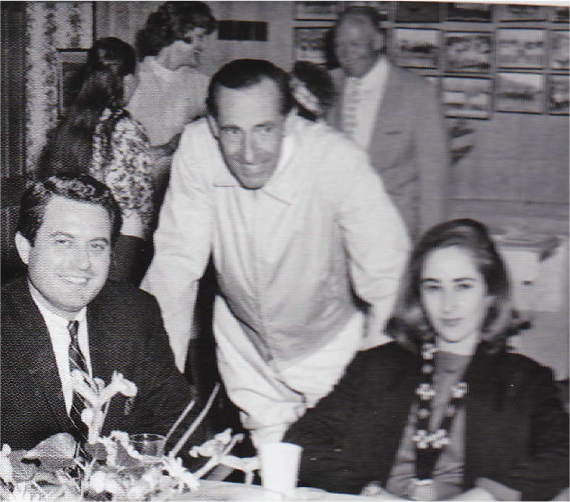the history
Sport of Kings
Early references to polo competition are found in writings from the reigns of Alexander the Great and Darius of Persia. There’s even an account of a match played between the Persians and Turkomans.
In the 1900s, as wealthy easterners fled harsh winter weather for the warmer climate of California, clubs were quickly established in Santa Barbara, San Diego and Los Angeles, and the popularity of polo continued to grow. Following the building of scattered fields throughout Santa Barbara and Montecito in the early 20th century, Long Island native and “yeast” king Max Fleischmann consolidated the players by building magnificent fields near the ocean in Carpinteria.
Polo, reputed to be the most ancient of mounted sports, has been played for more than 2,500 years.
a brief summary
Polo
As Alexander the Great and other military leaders conquered Asia, they introduced polo to the lands they visited, and the gentler classes soon adopted the sport. By the mid-1800s, polo had been introduced in England by returning cavalry officers. Among the spectators was a visitor from America, James Gordon Bennett Jr., publisher of New York Herald, who was so captivated by the lightning action and bold horsemanship of the “sport of kings” that he imported his zeal for polo to the United States in the 1870s. Bennett couldn’t have foreseen the impact it would have on the entire nation, including Santa Barbara, which is now home to one of the most notable polo clubs in the country: Santa Barbara Polo & Racquet Club.
1894
First polo game played in Santa Barbara at Agricultural Park as an exhibition.
1911
Santa Barbara Polo Club is admitted to United States Polo Association. Major Max Fleischmann, the “yeast king,” builds the club in its present location.
1920s - 1930s
A rise in popularity and a dramatic increase in the number of polo players in Santa Barbara. Teams and their horses arrive by train boxcar and walk from the station to the polo fields.
1942
Following a Japanese shelling of area on Goleta, soldiers are stationed at the polo club for the remainder of the war.
1950s
Polo is picked up again in the post-war era and Santa Barbara Polo Club sees the arrival of polo playing familieis such as the Grabers, Gilmores and Walkers.
1963 & 1966
The prestigious U.S. Open Tournament is played at Santa Barbara Polo Club. The club also hosts the first U.S. team trials for the famous Cup of the Americas Tournament: Argentina vs. U.S.
1970s
The famed 10-goal player Robert Skene leases Santa Barbara Polo Club as the last savior of the polo club prior to construction of condominiums and new polo complex.
1974
144 condominiums are completed by Santa Barbara Development Company. The recession in the 1970s later forces the company into bankruptcy.
The Club
Santa Barbara Polo Club was founded in 1911 and persevered through America’s golden age of polo in the decades between World Wars I and II. Along with the ebb and flow of history, sponsors have come and gone, but at its heart, polo in Santa Barbara is a family sport.
From the late Jack Conant and his sons Mike and Tom to the late Dr. Billy Linfoot, a renowned horse trainer, veterinarian and player, to his son Corky and brother Buddy Linfoot, all were professionals who played polo. Following the lead of legendary 10-goal player and one-time club manager Robert Skene, many families have attempted to protect the club and its future, often at great personal expense. Finally in 1975, Ken Walker, Ambassador Glen Holden and Dr. Norman Ringer purchased the club’s property to spare it from attempts at outside development, placing it in perpetuity with the State of California to ensure the future of polo in Santa Barbara.
These men were also instrumental in the construction, methodical development and continued care of the grounds and clubhouse over the years to create what many view as one of the finest jewels in the polo world.


An Enduring History
1975
Santa Barbara Polo Club, comprised of trustees Kenneth Walker, Glen Holden and Dr. Norman Ringer, purchase the existing polo fields and clubhouse. The trustees place the property into perpetuity with the State of California for the purpose of playing polo.
1975 - 1979
While operating the club and settling the many outstanding obligations, Glen Holden creates and leases the club to the present Santa Barbara Polo & Racquet Club Management Company, Inc.
1986
The polo club celebrates its 75th anniversary.
1994
Santa Barbara Polo & Racquet Club starts Pacific Coast Youth Polo Association with 35 students from UCSB, Santa Barbara City College and Westmont College.
1995
Through the efforts of the club, the first Interscholastic Regional Tournament is held at Santa Barbara Polo & Racquet Club. Five high school teams from the western U.S. participate.
1998
Through The Efforts Of Pat Nesbitt And Then President of the Federation of International Polo (FIP) the World Championship, an Olympic-style tournament was played at the Santa Barbara Polo Club. Players participate from more than 35 countries including Great Britain, Argentina, Brazil, Australia, Guatemala and the U.S. playing in the finals at the club. The event attracts more than 20,000 spectators.
2011
Santa Barbara Polo & Racquet Club has more than 500 members, more than 100 of whom are full-time polo members from all over the world. The club continus to host numerous charity and community events each year with polo and tennis as venues.